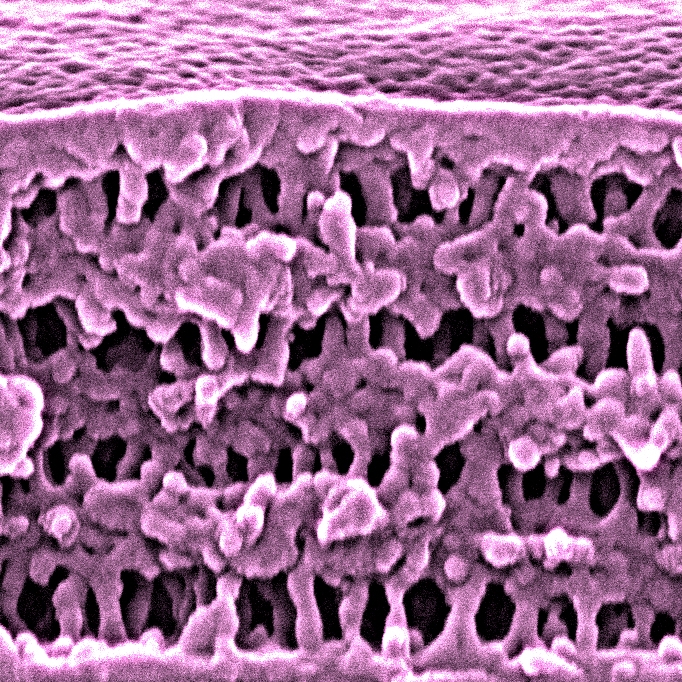The Cavendish Laboratories of the University of Cambridge and the Institute of Materials Science of Seville (ICMS) have recently published a collaborative work that confirms the invention of a new, simple and versatile formula to create porous polymeric materials with photonic crystal properties, capable of reflecting with great intensity a particular color. The discovery, which has potential industrial applications, represents a breakthrough in the knowledge that was held so far in this scientific field and has been published in the journal Nature Materials.
In order to synthesize a material of this nature, it is necessary to start from a polymeric film formed by at least two different polymers. According to previous studies, one of these components had to be interconnected and accessible from the outside in order to be extracted and, consequently, to achieve the porous material. The importance of this new work lies in the fact that it shows that the so-called “collective osmotic shock” (COS) method makes it possible to obtain a porous material even from structures with one of their components completely enclosed in a matrix, which opens up the possibility of applying it to a multitude of similar structures.
This experiment, as explained by Hernán Míguez and Mauricio Calvo, from the ICMS group involved in the research, works in a similar way to the school experiment in which a balloon with brine is placed in a bucket of cold water. The salt cannot leave the balloon but water can enter it, which reduces its salinity. The more water that enters, the more the balloon grows until it reaches a point where it bursts, completely releasing the salt to the outside. This process by which a liquid passes through a semi-permeable membrane is known as osmosis and is the basis of the experiment performed. In this case, the polymer enclosed in the matrix is dissolved by a solvent that gradually expels it to the outside, creating the porous network.
Industrial applications
Within the wide range of its industrial projection, the Cavendish Laboratory investigates potential uses with the Multifunctional Optical Materials group of the ICMS in which they have found collaboration with its head, Research Scientist Hernán Míguez, and Postdoctoral Researcher Mauricio Calvo. This group – whose institute is part of the Isla de La Cartuja Scientific Research Center – has a great background in the preparation and characterization of photonic materials, an area in which the collaboration with the University of Cambridge was initially established. The potential applications currently being explored by the Seville group are in the field of optical components, protection against ultraviolet radiation, sensors, light-emitting devices and solar cells.
Notes from the editors:
1. The study ‘Collective osmotic shock in ordered materials’ has been published on November 27th in the journal Nature Materials.
2. The work has been funded by the Qatar Foundation (QNRF), EPSRC, CONACyT, the Ministry of Science and Innovation and the Junta de Andalucía.
For more information:
http://www.mom.icmse.csic.es




